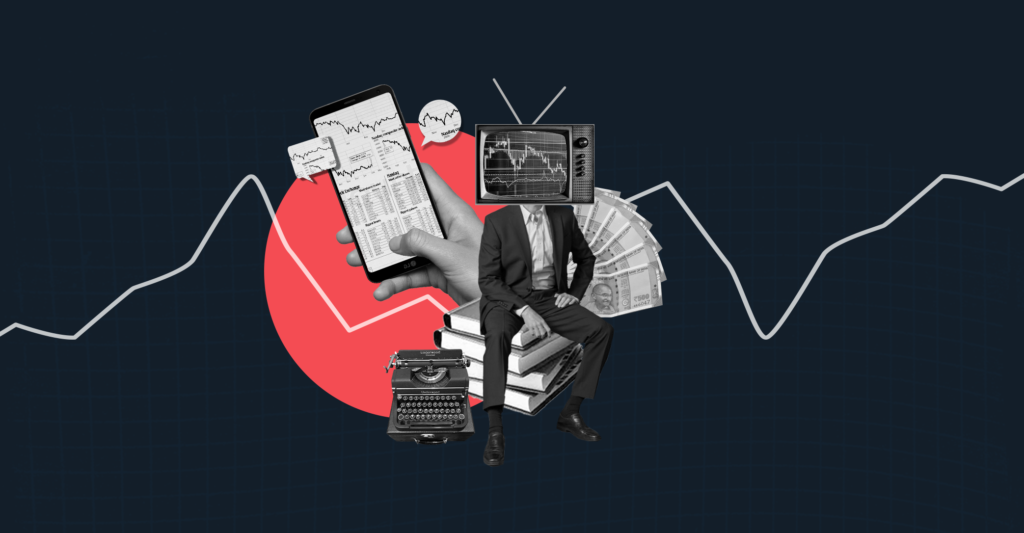Last Updated on Dec 13, 2023 by Harshit Singh
As we witness a wave of new investors taking to the stock market and diversifying their sources of income and, in turn, their portfolios, it is essential to understand the financial parameters that play an important role in influencing investment decisions. Basics include the various liquidity ratios which indicate how easily and fast a company can pay off its short-term debt obligations without raising external capital.
In this article, we deep dive into what liquidity ratios are and their components.
Table of Contents
What is liquidity ratio?
Liquidity refers to how quickly and efficiently an asset or security can be converted into cash without changing its market price. In other words, liquidity is the degree of effectiveness and ease by which an asset can be converted into cash. Universally, cash is considered the most liquid asset as it can be quickly converted into any other form of asset.
Liquidity ratios measure a company’s ability to pay off its debts and determine its financial health. Liquidity ratio analyses the current liabilities of a company vis-a-vis its capability to meet its obligations in case of an emergency.
Components of liquidity
When used in the comparison, liquidity ratios reveal much about the strength of the financial books of the company. Analysts can track and identify the changes in the business just by comparing previous periods with the current ones when performing an internal analysis of the company.
If a company’s liquidity ratio is high, it indicates a better ability to cover its outstanding debts.
External analysis is when liquidity ratios of two or more companies are compared in the industry.
The most widely used liquidity ratios are as follows:
Current ratio
This is the easiest and most simple ratio that measures the current liabilities in light of the current assets at a definite point of time, in the same year. The current assets are short-term deposits, market securities, amount receivables, cash equivalent, and cash itself, which can be converted into cash within one year. The current liabilities are those financial obligations that need to be paid off within one year. The formula is very simple.
Current ratio = Current assets / Current liabilities
For example, if the current assets and liabilities of a company are worth Rs. 4,00,000 and Rs. 2,00,000, respectively, the current ratio would be 2:1, which is indicative of its good financial health and capability to meet its current liabilities.
Quick ratio
This includes cash, equivalents of cash, its short-term investments and account receivables with respect to current liabilities. The formula is as below:
Quick ratio = (Cash and cash equivalents + Short-term investments + Accounts receivable) / Current liabilities
Quick ratio, also known as Acid test ratio, determines the company’s ability to pay off current liabilities with quick assets (like inventory, prepaid expenses, and supplies). Current assets of a company that can be converted into cash within 90 days are referred to as quick assets. In case, the balance sheet fails to provide a breakup of the current assets, it can be calculated as below:
Acid test ratio/ Quick ratio = (Total of current assets – Inventory – Prepaid expenses) / Current liabilities
The difference between the quick ratio and the current ratio explains the company’s dependency on inventory is too high. As it is known that there is a variance in the inventory value across industries, it is wise to find out industry averages and then compare acid test ratios for businesses. An acid test ratio of less than one signifies the company’s inability to pay off its debts.
Cash ratio
The most accurate ratio is the cash ratio. As the name suggests, liquid assets are strictly considered as cash or equivalents. It determines a company’s ability to stay solvent even in case of an emergency. If the liquidity to meet unforeseen events is not maintained, even a highly profitable company may get into trouble. Cash ratio is determined with a formula as below:
Cash ratio = (Cash and cash equivalents + Short-term investments) / Current liabilities
If the cash ratio of the company is one, it means that the business has an exact amount of cash to repay its debts.
If it is less than one, then it means that the business doesn’t have sufficient cash to set off its debts, while a cash ratio of more than one signifies that the business is in a good position and even after paying off its debts there will be a sufficient amount left.
Liquidity ratio explained with illustration
| Particulars | Amount |
| Cash and Cash Equivalent | 4,000 |
| Short-term investments | 1,000 |
| Receivables | 1,500 |
| Stock | 3,000 |
| Other Current Assets | 500 |
| Total Current Assets | 10,000 |
| Accounts Payable | 3,000 |
| Outstanding expenses | 800 |
| Tax payable | 1,200 |
| Deferred revenue | 700 |
| Total Current Liabilities | 5,700 |
The various liquidity ratios can be calculated as below:
- Current ratio = (Total current assets / Total current liabilities)
Current ratio = (10000 / 5700) = 1.75 - Acid test ratio = (Total current assets – Stock) / Current liabilities))
Acid test ratio = (10000 – 3000) / 5700)) = 1.23 - Cash ratio = (Cash and Cash Equivalent) / Current Liabilities)
Cash Ratio = (4000 / 5700) = 0.70
Impact and importance of liquidity ratio
Businesses need to maintain liquidity for smooth day-to-day operations. It is an indication of how good or bad the company’s financial health is.
Current ratio is the foundation of a business’s financial stability. It is connected with the working capital concept; it does not require cash immediately but it is indicative of the need for cash which may arise in the near future and ascertains that the current assets are good enough to cover up for current liabilities.
Liquidity ratios of a company determine the following:
Ability to pay off short-term debts
The liquidity of a company is directly proportional to its ability to pay off short-term debts. Stakeholders of the company are impressed by a liquidity ratio of two or three as the higher the ratio, the higher is the ability of the company to meet its obligations. A ratio of less than one implies the company does not have sufficient working capital and maybe on the verge of bankruptcy.
Creditworthiness
If the company is able to cover its financial obligations with its own assets in time, it shows that the credit worth of the company is high. Investors would feel assured that their money will be returned and that it is in safe hands if given on credit.
A high creditors’ turnover ratio implies that all the creditors are being timely and fully paid off, and otherwise signifies that the company is not able to make the best possible use of the credit facilities allowed to it by its creditors.
Worth of investments by the company
The investors are able to analyze the worth of investments made by them in the company. A low liquidity ratio raises obvious concerns, but even a high liquidity ratio is a reason for investors to think. A company with a higher liquidity ratio is extremely capable of paying its short-term debts but infers that huge quantities of liquid assets are locked with the company which is not earning anything more than the bank interest. These funds can be invested in a way to bring in an increased value and higher returns to the stakeholders.
Liquidity ratio limit by SEBI for mutual funds
A directive passed by the Securities and Exchange Board of India (SEBI) requires all open-ended debt mutual fund schemes to maintain a liquidity buffer of 10% of their net assets. That means it is imperative to hold a minimum of 10% liquid assets like cash, government securities, and treasury bills, etc., of their net asset value. To facilitate this, SEBI has made the entire process of categorization of norms very easy and carry out stress testing of the same. Financial experts are of the opinion that this move is quite similar to the banks having a Statutory Liquidity Ratio (SLR) and Cash Reserve Ratio (CRR) and will improve the overall liquidity management.
Conclusion
Though there are several liquidity ratios, all of them measure the same thing- a company’s ability to pay off its short-term debts.
Cash ratio focuses on the cash and cash equivalents, while quick ratio includes cash equivalents and marketable securities, and the current ratio looks at all current assets. Cash is available to pay bills while stocks are easier to sell but clearing may take two or three days.
Companies that go through a liquidity crisis experience difficulties in meeting their short-term obligations such as paying salaries to their employees, repayments of their loans, or settling supplier’s bills. Therefore, it is essential for investors to review the liquidity situation of the company before they seek to invest.





